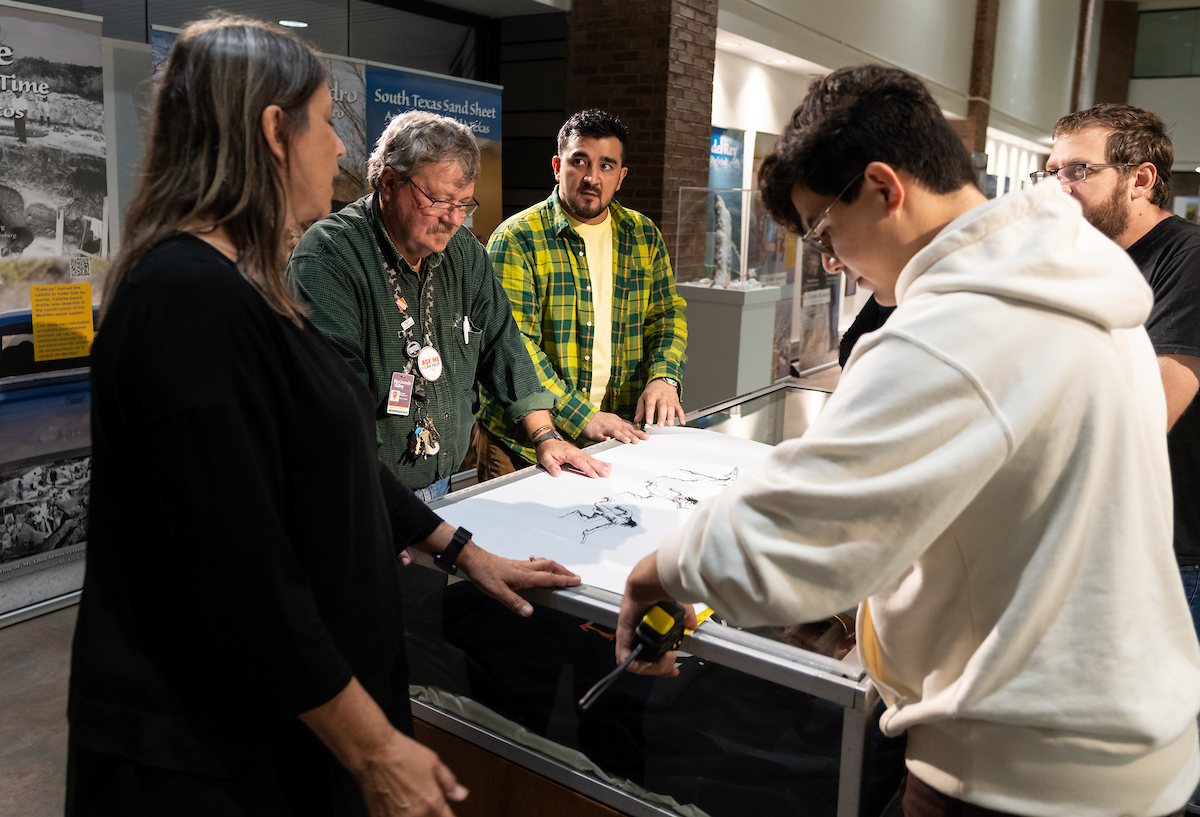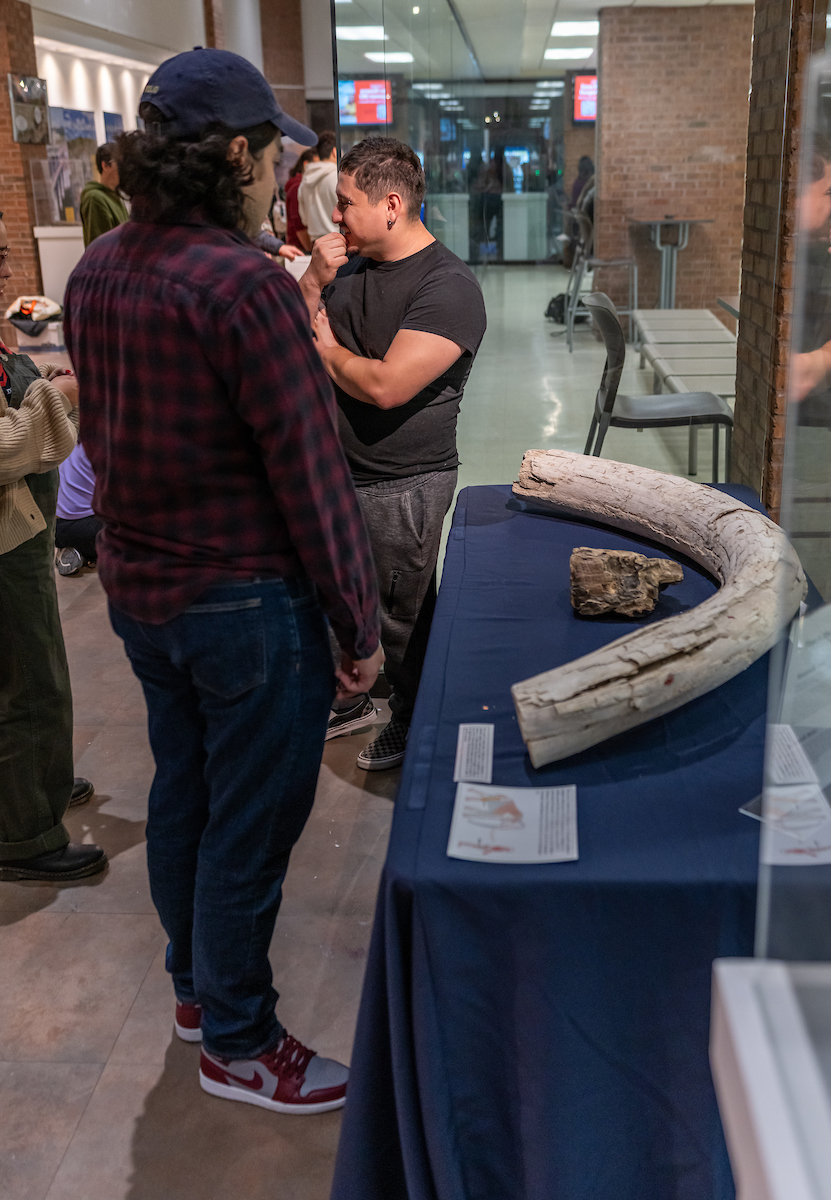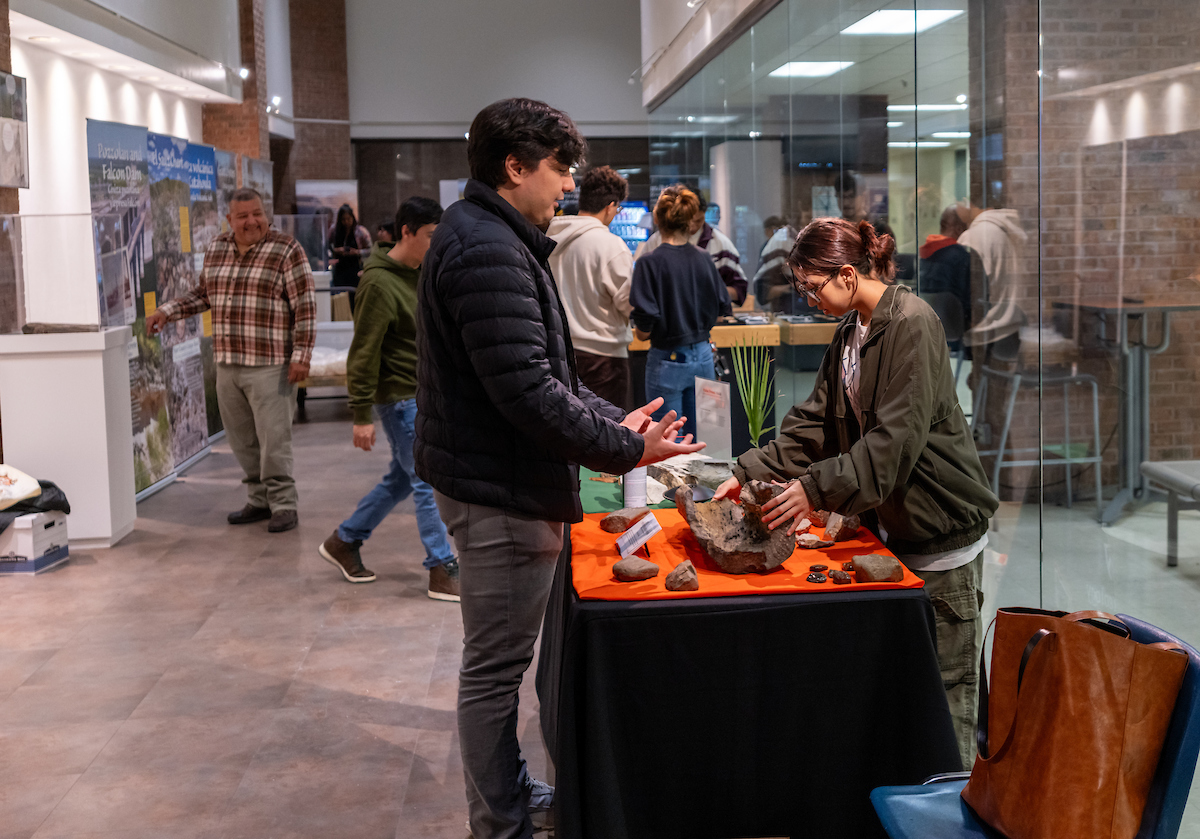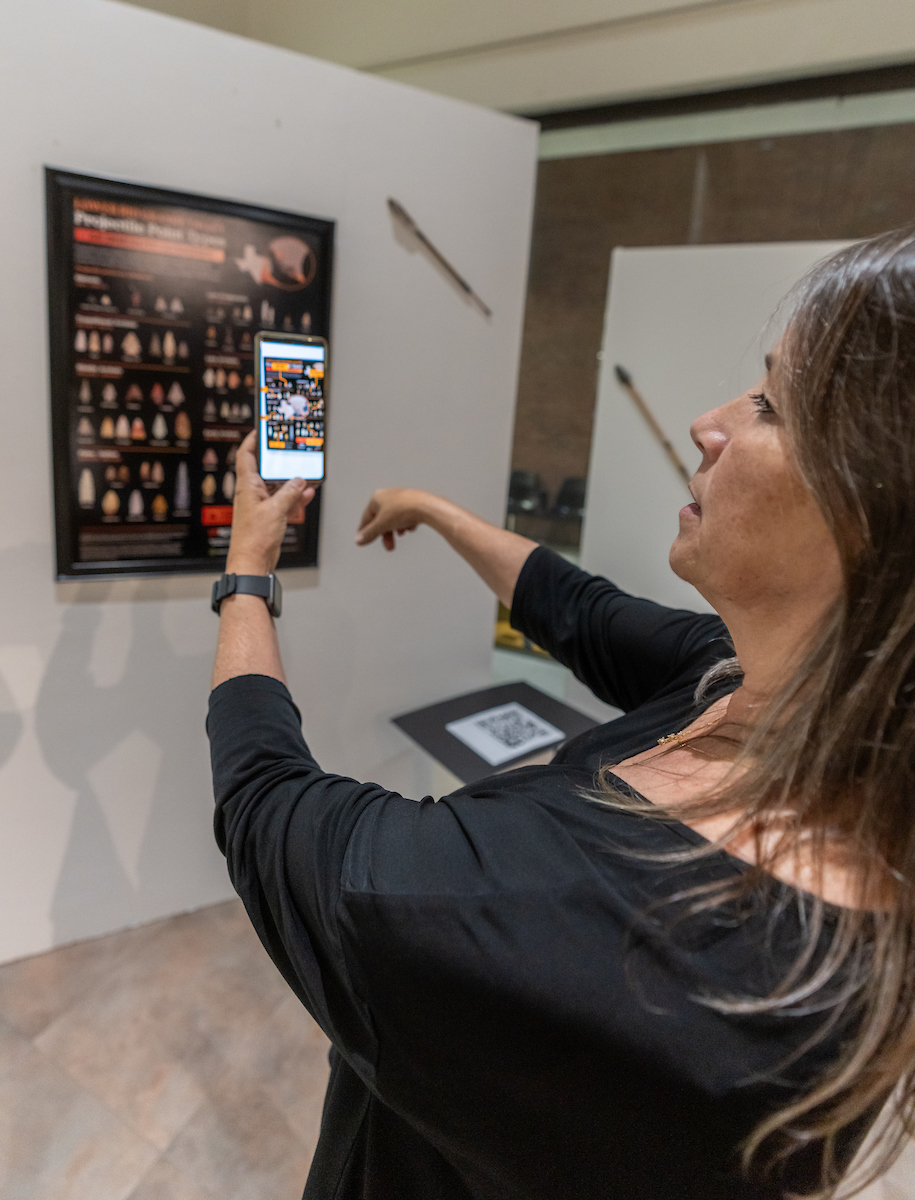By Amanda Alaniz
RIO GRANDE VALLEY, TEXAS – NOV. 17, 2023 – Ever wonder if you have a piece “hidden history” in your backyard? Some history buffs at UTRGV may have the answer to that question.
The UTRGV Community Historical Archaeology Project with Schools (CHAPS) Program, a community engagement program founded in 2009, installed a brand-new traveling exhibit “Ancient Landscapes of South Texas: Hiding in. Plain Sight” in late October.
The exhibit – put together by UTRGV students enrolled in the “Discovering the Rio Grande Valley” class and UTRGV faculty involved with CHAPS – showcases artifacts and information about natural landscapes discovered around the Rio Grande Valley. It opened Nov. 1, 2023, at the Charles and Dorothy Clark Art Gallery in Liberal Arts Building South on the Edinburg campus.
Visitors can explore 50 million years of geological history and 15,000 years of cultural history of South Texas.
Dr. Christopher L. Miller, associate director of the CHAPS Program and history professor, said the exhibit contains 22 movable panels, as well surrounding hardware, to give people a historic picture.
“It’ll give people a good graphic and physical sense of what the natural and cultural historical foundations of this area are,” he said.
Roseann Bacha-Garza, CHAPS program director and anthropology lecturer, said the students involved in the instillation were prepared with assignments, field trips, research – the tools necessary to understand the exhibit’s work.
“The CHAPS program is all about experiential learning. We conduct the class ‘Discovering the Rio Grande Valley,’ every fall since 2011. The class gives students an opportunity to have hands-on learning through the assignments, the thematic structure of the classes we teach,” she said. “This way they get to learn about the very valuable, interesting history of the Rio Grande Valley firsthand. They can in turn be a little prouder where they are from.”
The exhibit takes visitors on a historic trek with informative panels, artwork, artifacts and pieces of petrified rock.
The exhibit is unique because visitors can “touch” some pieces, such as a tusk of a woolly mammoth and pieces of historic petrified wood. Visitors can also explore more history with the Atlatl and Projectile Point Artifact Educational Poster utilizing the RGVpointsAR app.
STUDENTS HELP TELL THE STORY
Students took charge of specific sections of the exhibit. Robert Paul del Barrio, UTRGV graduate student, worked on the petrified forest and created a “touch landscape.”
“People can come in and feel what petrified wood feels like. It’s one of our state rocks, our state fossils and a lot of people don’t know that. It’s something commonly found in the Valley,” he said.
“I think being able to touch the past is a way to connect people to their roots, their heritage and (gain a) better understanding of what is here in the Valley.”
Ruben C. Lozano, MFA graduate student for visual arts, created a canvas oil painting of the ancient landscape. The painting shows pieces of CHAPS’ discoveries, such as the woolly mammoth from the prehistoric times, volcanic ash, giant oysters, and the palm tree salvation – all founded in the Valley.
“It took me exactly three months to complete. I want people to gaze upon the scenery that was discovered that no one ever knew until now,” he said.
Lozano said he does plan to continue creating paintings of more historic landmarks for his own documentary series.
SHARING THE HIDDEN KNOWLEDGE
CHAPS’ goal is to share the findings with the community and take it to local schools. Dr. Russell K. Skowronek, CHAPS founding director and professor of history and anthropology, said the program has worked with K-12 teachers in earth and social sciences to bring the history into the classrooms.
“One of the other exhibits is what we developed with K-12 integrated education. We’ve worked with more than 120 teachers; they’ve been part of this. They’ve developed lesson plans that cut across, that are really going to change education in this part of Texas,” he said. “Our hope has always been for people to say, ‘Wow, I didn’t know that.’”
Jackqueline Alejos, a UTRGV history graduate student and PSJA Early Collegiate High School teacher, helped guide the undergraduate students about developing their research skills, how to take notes when they visit the landscapes.
Working in education, Alejos said, she believes having the exhibit accessible to the community is important.
“A lot of children don’t get the opportunity to explore these fields,” she said. “They don’t realize the archeology and history is accessible to anyone. It’s showing children these are things in your own backyard.”
The traveling exhibit “Ancient Landscapes of South Texas: Hiding in. Plain Sight” is currently on display at the Charles and Dorothy Clark Art Gallery in Liberal Arts Building South on the Edinburg campus until Nov. 20, 2023.
Learn more about the CHAPS program by visiting utrgv.edu/chaps.
ABOUT UTRGV
The University of Texas Rio Grande Valley (UTRGV) was created by the Texas Legislature in 2013 as the first major public university of the 21st century in Texas. This transformative initiative provided the opportunity to expand educational opportunities in the Rio Grande Valley, including a new School of Medicine and a School of Podiatry, and made it possible for residents of the region to benefit from the Permanent University Fund – a public endowment contributing support to the University of Texas System and other institutions.
UTRGV has campuses and off-campus research and teaching sites throughout the Rio Grande Valley including Brownsville (formerly The University of Texas at Brownsville campus), Edinburg (formerly The University of Texas-Pan American campus), Harlingen, Weslaco, McAllen, Port Isabel, Rio Grande City and South Padre Island. UTRGV, a comprehensive academic institution, enrolled its first class in the fall of 2015; the School of Medicine welcomed its first class in the summer of 2016, and the School of Podiatric Medicine in the fall of 2022.




